#Pakistan Travelogue
Text
youtube
#Ugly & Traveling#Ugly And Traveling#Skardu Pakistan#Skardu Pakistan Vlog#Skardu Travel Guide#Pakistan Tourism#Shangri-La Resort#Upper Kachura Lake#Katpana Cold Desert#Deosai Plains#Adventure in Skardu#Skardu Sightseeing#Travel Pakistan#Hidden Gems of Skardu#Pakistan Travelogue#Must-Watch Travel Video#Explore Pakistan#skardu valley#skardu vlog#skardu road#Skardu in winters#skardu snow#skardu gilgit#skardu gilgit baltistan#skardu gilgit road#skardu#travel#travel around the world#travel channel#traveling vlog
0 notes
Photo

Family / Hospitality (1) - IMRAN™ I love my siblings. In Pakistan usually for 2 week trips, I generally try to split my time equally at my sister’s and brother’s homes. My sister, a doctor, medical textbook author, researcher, homemaker, a successful medical lab leader, and more always amazes me. She still finds time to add extra nice touches of hospitality even for my 5-7 days visits. I’m one of those simple travel sized “toothbrush, toothpaste, razor, shaving foam, comb, nail clippers in a zipped pouch” type of guy. This is one of several baskets she sets up for me every trip. It is hard to even take something and spoil the beautiful presentation. 😊 © 2022 IMRAN™ See 3D at https://m.facebook.com/story.php?story_fbid=pfbid0wWN4moKZhjCiY9EJwX5XWP9e5VeVm9YwiQwMz4tZGvZkK75J5rePcS77JFvkhGjel&id=100063547631173&mibextid=qC1gEa #Pakistan #Lahore #family #home #hospitality #basket #decorations #toiletries #style #care #travel #travelogue #3D #decor (at Lahore, Pakistan) https://www.instagram.com/p/ClpLSltNKoG/?igshid=NGJjMDIxMWI=
#pakistan#lahore#family#home#hospitality#basket#decorations#toiletries#style#care#travel#travelogue#3d#decor
1 note
·
View note
Text
Hijra (ہیجڑا)
Hijra is a pejorative term, mostly used in South Asia for transgender woman, eunuch, transvestite, androgynous, non-binary & intersex individuals. They lives in well-organized households and communities, led by a guru. Hijra community have a distinct subculture, secret language, cults and traditions. Hijra individuals maintain non-binary & matrilineal kinship within their community. Not all south asian trans femme, non-binary, queer folks are part of Hijra subculture.
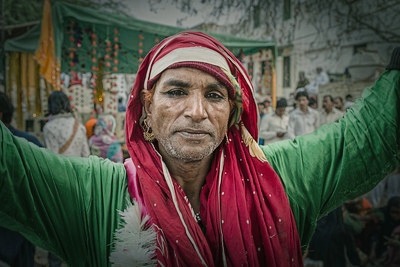

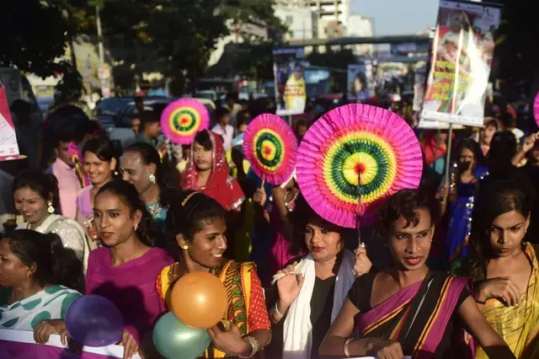
Traditionally, the hijra are known as individual of “separate gender” in South Asian society. Most hijras are born as male and very few are born as intersex. Most Hijras present themselves in feminine attire, while other may present themselves in masculine or androgynous attire. The hijra use feminine name & pronoun for themselves. While other may use masculine & gender-neutral name & pronoun. The hijra are officially recognized as ''Third gender'' in Bangladesh, Pakistan, India & Nepal.

The word “Hijra” came from the Arabic word Hijr. While others argue that the word came from the Farsi word Hīj. In Arabic, Hijra literally means migration, leaving own tribe/clan. In broadest definition it means spiritual transformation, transcending boundaries. Despite having a sacred meaning, the word hijra has become a slurr in most parts of South Asia.
In India, many transgender folks like to avoid hijra for themselves. Instead they prefer Kinnar/Kinner, Shiv-shakti, Aravani, Mangala-mukhi, Moonaam Lingam, Kothi, Thritiya Linga, Tirunangais, Thirunangai, Tirunaṅkai, Thirunambi, Khwaja sira, Trans man, Trans Woman, Non-binary, Brihannala, Shikandi, etc for themselves. In Pakistan, hijra term is mostly used in a derogatory manner. This is why, non-hijra transgender & hijra transgender folks preferred Khawaja sara/Khwajasira, Mukhannath, Mutajannas, Moorat for themselves.
History
The existence of hijras or eunuchs first documented in the royal harems of Delhi Sultanate.In the 7th century, Hijras became trusted servants in the Mughal courts. (Please note:The term eunuch in reference to hijras or transgender in southeast asia is now considered pejorative; however, historical research finds the terms eunuch and hijra used interchangeably).

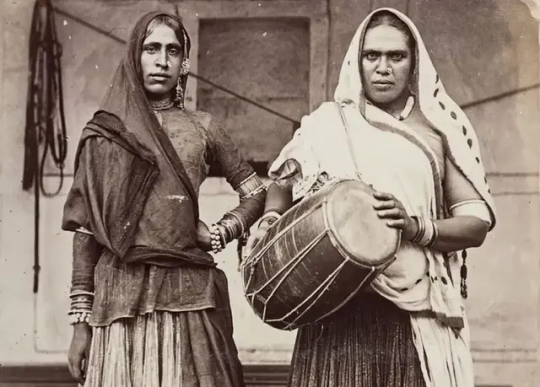

In those days, Hijras or transgenders were allowed to travel freely between men’s quarter and women's quarter, administrate the royal harem, & take care of the harem's children. Different travelogues documented that Hijras were also “intimate servants” and “beloved” of kings, princes, queens & princesses. During the mughal era, Hijra community played important roles in royal court,in royal households,in diplomatic and military affairs.
During the colonialism:
Mass Persecution of hijras/gender variants & gays in Indian subcontinent started during the British colonialism. In early 1850s, British colonial authorities deployed various strategies to eradicate India's gender & sexual minorities, whom they saw as "a breach of public decency." Further Britishers viewed hijras as incapable of moral transformation & assimilation. Therefore, they were subjected to eliminatory policies. In 1860, hijras became subjected to anti-sodomy law Section 377 which allowed British authorities to prosecute hijras (for their existence).
In 1861, authorities of the North-Western Provinces (NWP) sought to enact a 'Special law' against hijras/gender variants. By 1870, no high-ranking British officials argued against the implementation of special legislation to address the 'hijra problem; thus solidifying a violent anti-hijra campaign all across the Indian subcontinent. Anti-hijra laws were enacted; whereas a law outlawing castration, a central part of the hijra community (although not required for community membership), crossdressing, community gathering, ritual practices. The hijra were included in the Criminal Tribes Act of 1871 and labelled a "criminal tribe", now subjected to compulsory registration,strict monitoring, and stigmatization. Because of economic costs, which were the main impetus behind British colonialism, Hijras and other so-called "criminal tribes" were unable to be collectively sequestered from colonial society. This act forced the hijra community to go underground. British authorities considered “eunuchs” responsible for sodomy, kidnapping, and castrating male children (Hinchy 2019). Although the Criminal Tribe Act was rescinded in 1952, a collective memory still paints hijras as historical gender deviants with a criminalized sexual variance. After independence, hijras survived these barbaric colonial extermination attempts.However, the centuries-old stigma & shame continues as transphobic legacy in Southeast Asia.
Culture & Lifestyle
Transgender, MTF transvestite, effeminate/kothi, non-binary, and intersex individuals who live in Hijra community must undergo an initiation rite. Through this initiation rite, one can be a part of hijra community. Many hijras practice castration & emasculation, for attaining a high level of spirituality & sacredness. Not all hijras do castration.
The hijra gharanas are symbolic units of lineage, called a house, guiding the overall schematic outlining of the social organization of the hijra community in Indian Subcontinent. Hijras community follow a guru-chela kinship system, in which guru leads her chelas, provide them money, foods,shelter & other resources. This kinship originally developed on the basis of sufi discipleship of Pir-Mureed. In hijra community guru called their chelas daughters or son & chelas called their guru mother. Guru's guru are called nani guru (sometimes grandma). Nani gurus has the highest rank within hijra community.
They usually earn their money by collecting donations, ritual blessings (badhai), begging in streets, singing & dancing in social occasions, sex work. Collecting donations or alms, ritual blessing, sex work are common sources for their income. But now they are quitting such professions & doing various works for living.
2 notes
·
View notes
Photo

There are two phases of enjoyment in journeying through an unknown country - the eager phase of wondering interest in every detail, and the relaxed phase when one feels no longer an observer of the exotic, but a participator in the rhythm of daily life.
- Dervla Murphy
There are few better literary gatherings than the Immrama Travel Writing festival in Lismore, County Waterford. Huddled quietly on the banks of the River Blackwater at the base of the Knockmealdown Mountains, Lismore is a scenic enough spot but on the face of it an unlikely magnet for the global travel writing community. Yet for two decades a string of stellar travellers including Michael Palin, Jan Morris, Paul Theroux, Kate Adie, Ranulph Fiennes, Terry Waite and Pico Iyer have made pilgrimages to this small rural town three hours south-west of Dublin to share their stories.
What draws notable itinerants from around the world to this rural backwater on the fringe of Europe is the special status it holds for writers and lovers of travel literature. Lismore was the hometown of the remarkable Dervla Murphy, who died on 22 May 2022 at the age of 90.
Here are six must-read books by one of Ireland’s greatest travel writers and explorers. They are all in print and currently available from Eland Publishing, one of my favourite publishing houses of travel writers and explorers, past and present.
1. Full Tilt: Ireland to India with a Bicycle (1965)
Dervla’s debut recounts an epic ride to India. Setting out from Lismore in 1963, she travelled via Europe, Iran, Afghanistan and Pakistan on her trusty bicycle, named Roz, facing 50ft snowdrifts in the Turkish highlands and some punishing pedalling through the heat of the Himalayan summer.
2. Where the Indus Is Young (1977)
A vivid travelogue detailing Dervla’s somewhat extreme winter hiking trip through Baltistan, in the northern Kashmir region, battling temperatures that dipped to minus 20C. She was accompanied by her daughter, Rachel, then aged six; the only person Dervla ever deigned to travel with.
3. A Place Apart (1978)
At the height of the Troubles, aiming to put aside the sectarian loyalties that might have come from her own family connections to the IRA, Dervla cycled to Northern Ireland to try to unpick the situation, creating a travelogue that features revealing interviews and exchanges with locals on both sides of the divide.
4. Wheels Within Wheels (1979)
In the autobiography that followed seven travel books, Dervla notes: “Even at 16, I had a strong premonition that I would never marry. Possibly the predictability of the average marriage put me off; it was the antithesis of my ideal unplanned existence - travelling, writing, not knowing what was going to happen next year or next month or even next week.”
5. Through Siberia by Accident (2006)
Due to a painful leg injury, Dervla had to rethink her planned trip to Ussuriland, a Russian outpost free of anything remotely touristic, to explore the vast territories of Siberia instead. There she found humbling hospitality and generosity from local hosts during a journey of self-discovery and contradiction - human warmth and kindness against a bleak, unforgiving backdrop.
6. A Month by the Sea: Encounters in Gaza (2013)
Over the summer of 2011, in her 80th year, Dervla spent a month in the Gaza Strip in Palestine. Described by Irish novelist Colm Tóibín as a “a wake-up call to the world”, Dervla’s determination to understand how Arab Palestinians and Israeli Jews might find resolution gives voice to those rarely heard in the region and offers a unique insight into a place shaped by isolation.
#dervla murphy#murphy#quote#books#travel#reading#explorer#exploration#writer#irish#icon#femme#ireland
18 notes
·
View notes
Note
Delillo's The Names? I'm contemplating whether to add it to my immediate-reads or my eventual-reads. I am in awe of Underworld; it might be the greatest novel of sustained readerly brilliance written in the 20th century (on a related note, which other novels do you think could contend for that title?). White Noise is one of the funniest novels I've ever read, although I coolly admire its greatness more than fully submit to its sublimity. (I read it during the first weeks after the Covid restrictions were lifted, and my near-disgust at any reminder of death (its thanatophobia felt alien; I only felt rage), and quite frankly, any characterization of "expertise" in any field, be it Hitler or pop culture, was undoubtedly a personal limitation.)
It's good. I need to reread the whole thing carefully soon—I read it years ago in college and kind of skimmed it again more recently—but its general place in DeLillo's oeuvre is earned: the book where he enters his major phase from the sometimes zany experiments of the 1970s. It raises earlier models of a certain kind of novel—the dense American meditation on "the international theme" of Hawthorne and James, the booze-soaked ex-pat American travelogue of Hemingway and Fitzgerald, the paranoid literary spy thriller of Conrad and Greene—into a more cosmic dimension with its almost Heideggerean rumination on language as ineffable ground of being in despite of all attempts at religious, economic, and political control.
People everywhere are absorbed in conversation. Seated under trees, under striped canopies in the squares, they bend together over food and drink, their voices darkly raveled in Oriental laments that flow from radios in basements and back kitchens. Conversation is life, language is the deepest being. We see the patterns repeat, the gestures drive the words. It is the sound and picture of humans communicating. It is talk as a definition of itself. Talk. Voices out of doorways and open windows, voices on the stuccoed-brick balconies, a driver taking both hands off the wheel to gesture as he speaks. Every conversation is a shared narrative, a thing that surges forward, too dense to allow space for the unspoken, the sterile. The talk is unconditional, the participants drawn in completely.
This is a way of speaking that takes such pure joy in its own openness and ardor that we begin to feel these people are discussing language itself. What pleasure in the simplest greeting. It’s as though one friend says to another, “How good it is to say ‘How are you?’” The other replying, “When I answer ‘I am well and how are you,’ what I really mean is that I’m delighted to have a chance to say these familiar things—they bridge the lonely distances.”
I was hoping Lorenzten, in his awaited and then celebrated and indeed excellent DeLillo conspectus in the revived Bookforum, would explain why he thinks The Names is the greatest American novel or however he phrased it somewhere (Twitter? a podcast?—I don't remember). He doesn't quite, but I assume this paragraph implies that it has something to do with the novel's placing of America in the doomed lineage of empires redeemed only by the free and creative, i.e., novelistic, use of language (the little subtweet in the passage is that DeLillo borrowed Tap's novel from a young Atticus Lish):
There is something a little silly about the cult, novelistically. Their mode of killing, murdering people whose initials match the letters of place-names, is preposterous. But the irrationality is the point and so is the ambiguous role of language. Axton is fascinated by the Greek language and its alphabet but he never goes so far as to learn it. (Owen by contrast knows many languages living and dead.) As much as Axton travels to research it—to the Peloponnese, to Jordan, to Pakistan—he can never tell if the cult and its murders are some reawakening of ancient violence or a modern reaction to the new circumstances of American-imposed globalization. What would the difference be? Language and alphabets are the remnants of conquest, and the old names that go with the cults’ murders are remnants of dead empires. Owen and Frank are similarly transfixed, the one with his memories of plains mysticism, the other as a representative of a counterculture whose antagonism to the system was once without ambiguity. These variations on American unknowing, animated within a book whose tissue is DeLillo’s lyrical descriptions of the Greek landscape and points east, give the novel its power. A character refers to Europe as the “hardcover,” America as “the paperback version,” and India—not yet ushered into the regime of modernity, mass literacy, and the nascent world of computers and telexes, still governed by oral traditions—as “not even a book.” The Names glimpses these contrasts in simultaneous anachronism. It is to Axton and Kathryn’s son Tap that the future belongs. He spends most of his time imagining a lost American past, writing a historical novel about Owen’s prairie boyhood, full of misspellings.
On the novel as sustained prose performance, I think DeLillo's generational peers reached a similar peak around the same time he did, as in Roth's Sabbath's Theater or Morrison's Paradise. McCarthy's comparable work comes a little earlier, with Suttree. Maybe The English Patient, which owes something to DeLillo, who gave it a generous blurb. In prior generations, I think of Herzog, Nightwood, Absalom, Absalom!, Mrs. Dalloway. While this strikes me as a 20th-century ideal arising from the modernist notion of the novel as high art, it's anticipated in the 19th century in Melville, Dickens, and Conrad, who wrote, in the Preface to a text I must not, well, name,
A work that aspires, however humbly, to the condition of art should carry its justification in every line.
2 notes
·
View notes
Text
Best novelist in hindi
The title of "best novelist in Hindi" can be subjective and may vary depending on individual preferences. However, some widely acclaimed Hindi novelists include Munshi Premchand, Harivansh Rai Bachchan, and Amrita Pritam, among others. Each of them has made significant contributions to Hindi literature in their own unique way.

Determining the "best" writer in Hindi is subjective and can depend on personal preferences, genres, and themes that resonate with individual readers. However, several writers in Hindi literature have made significant contributions and are highly regarded. Here are some of the most prominent and influential Hindi writers:
1. **Munshi Premchand:** Often referred to as the "Upanyas Samrat" or "Emperor of Novels," Munshi Premchand is considered one of the greatest Hindi writers of all time. His stories and novels, which often focused on social issues, continue to be widely read and appreciated.

2. **Harivansh Rai Bachchan:** A renowned poet and writer, Harivansh Rai Bachchan's works, including "Madhushala" and "Agneepath," have left an indelible mark on Hindi literature. His poetry is celebrated for its depth and philosophical themes.

3. **Jaishankar Prasad:** Jaishankar Prasad was a leading figure in the Chhayavad movement, known for his lyrical and romantic poetry. His epic "Kamayani" is considered a masterpiece.

4. **Sumitranandan Pant:** A prominent poet of the Chhayavad era, Sumitranandan Pant's poetry is known for its spiritual and philosophical themes. "Gunaahon Ka Devta" is one of his well-known works.

5. **Suryakant Tripathi Nirala:** Nirala was a versatile writer known for his poetry, essays, and novels. His poems often dealt with social issues and human suffering.

6. **Dharamvir Bharati:** Known for his novel "Gunahon Ka Devta," Dharamvir Bharati's literary contributions are highly regarded, particularly in the realm of modern Hindi fiction.
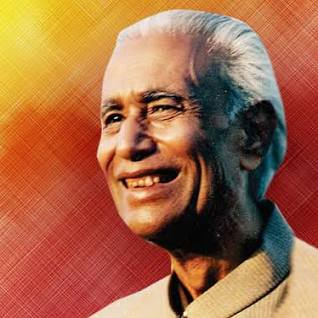
7. **Rahul Sankrityayan:** A prolific writer and traveler, Sankrityayan's works spanned various genres, including travelogues, essays, and novels. He is known for his significant role in popularizing Buddhism in India.

8. **Kamleshwar:** An influential writer and scriptwriter, Kamleshwar's works often explored contemporary urban life and societal changes. "Kitne Pakistan" is one of his notable novels.
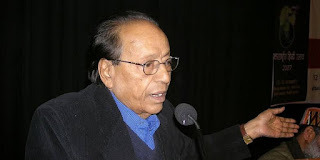
9. **Phanishwar Nath Renu:** Known for his novel "Maila Anchal," Renu's storytelling depicted the rural life and culture of Bihar with great authenticity.

10. **Ashapurna Devi:** A prominent Bengali writer who also wrote in Hindi, Ashapurna Devi's novels, especially the "Subarnalata" series, are celebrated for their exploration of women's issues and societal changes.
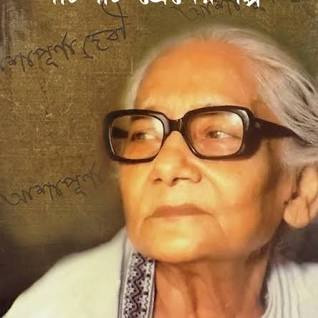
These are just a few of the notable writers in Hindi literature, and there are many more talented authors who have made significant contributions to the language and culture. The "best" writer in Hindi ultimately depends on your personal preferences and the themes or styles that resonate with you.
1 note
·
View note
Text
eBook (Download) High: A Journey Across the Himalaya, Through Pakistan, India, Bhutan, Nepal, and China BY : Erika Fatland
E-Book Download High: A Journey Across the Himalaya, Through Pakistan, India, Bhutan, Nepal, and China by Erika Fatland

Ebook PDF High: A Journey Across the Himalaya, Through Pakistan, India, Bhutan, Nepal, and China | EBOOK ONLINE DOWNLOAD
If you want to download free Ebook, you are in the right place to download Ebook. Ebook/PDF High: A Journey Across the Himalaya, Through Pakistan, India, Bhutan, Nepal, and China DOWNLOAD in English is available for free here, Click on the download LINK below to download Ebook After You 2020 PDF Download in English by Jojo Moyes (Author).
Download Link : [Downlload Now] High: A Journey Across the Himalaya, Through Pakistan, India, Bhutan, Nepal, and China
Read More : [Read Now] High: A Journey Across the Himalaya, Through Pakistan, India, Bhutan, Nepal, and China
Description
An ambitious and magnificent new travelogue by bestselling and prize-winning author Erika Fatland?(The Border?and Sovietistan), on a journey along the Himalaya.The Himalaya weave through five very different countries, where the world religions of Islam, Buddhism and Hinduism are mixed with ancient shamanic religions. Countless languages and vastly different cultures live in the secluded mountain valleys. Modernity and tradition collide, while the great powers fight for influence. We have read about mountain climbers on their way up Mount Everest and about travellers on the spiritual quest for Buddhist monasteries. But how much do we know about the people living in the Himalaya? Fatland invites us into close encounters with the many peoples of the region, and at the same time takes us on a dizzying journey at altitude through incredible landscapes and dramatic, unknown world histories - all the way to the most volatile human conflicts of our times.
0 notes
Photo
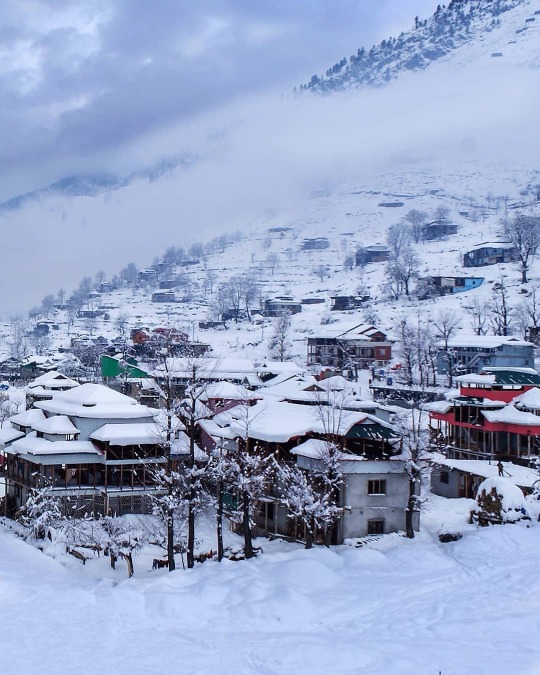
Kel, Neelum Valley, Kashmir 😍💚 . Photo credits @faysallightbox . Visit us @nature.pakistan to @experience.pakistan . Submit your photo using hashtag #ExperiencePakistan . #kel #neelumvalley #azadkashmir #kashmir #kashmirdiaries #pakistan #snow #snowfall #winter #travelogue #instatravel #mountains #landscapephotography #photography #photooftheday #beautifuldestinations #roadtrip #wanderlust #natgeo #beautifulpakistan #natgeotravel #hiking #trekking #hikingadventures #instagood #moodygrams #agameoftones #wanderer #passionpassport (at Kel, Azad Kashmir, Pakistan) https://www.instagram.com/p/CKjitg3nLWc/?igshid=11v1k6uo9tdb3
#experiencepakistan#kel#neelumvalley#azadkashmir#kashmir#kashmirdiaries#pakistan#snow#snowfall#winter#travelogue#instatravel#mountains#landscapephotography#photography#photooftheday#beautifuldestinations#roadtrip#wanderlust#natgeo#beautifulpakistan#natgeotravel#hiking#trekking#hikingadventures#instagood#moodygrams#agameoftones#wanderer#passionpassport
2 notes
·
View notes
Photo
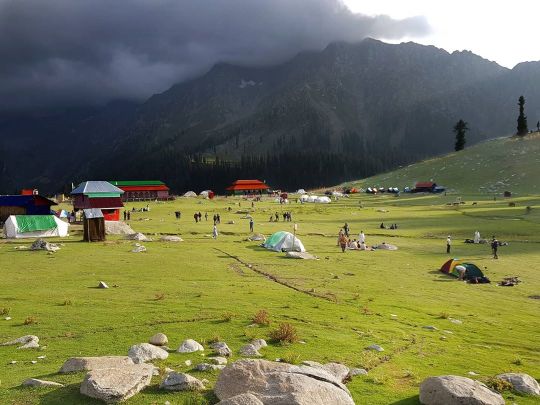
راسب بھی آئے ہوتو احسان تمہارالیکن وہ جو قیامت گزرنی تھی گزربھی گئ دوست . . . . . . . . . #kumratvalley #dawndotcom #khyberpakhtunkhwa #kashmir #heavenonearth #pakistan #summer #nature #naturelovers #naturephotography #natureporn #travel #traveldiaries #travelgram #travelogue #travelphotography #instatravel #mountain #mountainscape #mountains #adventure #adventurenthusiasts #Wanderlust #beautifuldestinations #beautifulpakistan #landscape #landscapephotography #photography #agameoftones #hikingadventures (at Jahaz Banda Meadows) https://www.instagram.com/p/CEQMTpvDqPe/?igshid=x9cxlbdb2gql
#kumratvalley#dawndotcom#khyberpakhtunkhwa#kashmir#heavenonearth#pakistan#summer#nature#naturelovers#naturephotography#natureporn#travel#traveldiaries#travelgram#travelogue#travelphotography#instatravel#mountain#mountainscape#mountains#adventure#adventurenthusiasts#wanderlust#beautifuldestinations#beautifulpakistan#landscape#landscapephotography#photography#agameoftones#hikingadventures
3 notes
·
View notes
Video
- Ankara - Atakule Turkey celebrates Pakistan day 🇵🇰 Oh!! I love this country or what ❤ #pakistan #resulotion #day #ankara #atakule #love #pakistanday #turkey🇹🇷 #pakistan🇵🇰 #friendship #23rdmarch #celebration #green #flag #iremozelvlogs #travelogue #travelbeautifulpakistan #thepackedsuitcase #iremozel https://www.instagram.com/p/BvTRphLFB7q/?utm_source=ig_tumblr_share&igshid=kod88kp5jyb
#pakistan#resulotion#day#ankara#atakule#love#pakistanday#turkey🇹🇷#pakistan🇵🇰#friendship#23rdmarch#celebration#green#flag#iremozelvlogs#travelogue#travelbeautifulpakistan#thepackedsuitcase#iremozel
5 notes
·
View notes
Photo

Chai with view ❤️ At @cafedehunza Karimabad hunza valley. #thekarakoramclub #dawndotcom #pakistan #iropakistan #flashh_pakistan #wu_pakistan #travel #traveler #travelogue #travelphotography #natgeoadventure #natgeopeople #naturephotography #natgeopakistan #instadaily #instapic #ig_today #traveldiaries #instapakistan #pictureofpakistan #etribune #telenorxpakistan #photography #picoftheday #bbctravel #wanderer #mommywithbaby #wanderlust #destinationpk #honor8x @travel.girls.pk @arfasphotography @traveling_girls_pakistan @travelbeautifulpakistan @iglovepakistan @hunzavalleyy @dawn_dot_com @thekarakoramclub https://www.instagram.com/p/BxAHtQynk4-/?igshid=1jpmuerkr6gsa
#thekarakoramclub#dawndotcom#pakistan#iropakistan#flashh_pakistan#wu_pakistan#travel#traveler#travelogue#travelphotography#natgeoadventure#natgeopeople#naturephotography#natgeopakistan#instadaily#instapic#ig_today#traveldiaries#instapakistan#pictureofpakistan#etribune#telenorxpakistan#photography#picoftheday#bbctravel#wanderer#mommywithbaby#wanderlust#destinationpk#honor8x
1 note
·
View note
Photo
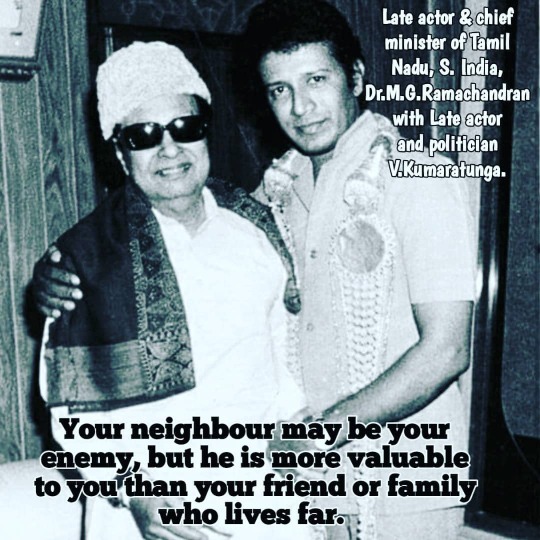
#passion #successmindset #key2succcesss #islamabad #isloodiaries #islamabadgram #islamabaddiaries #pakistan #winteriscoming #capitalcity #cityscape #roadtrip #spring #traveldiaries #travelgram #travelogue #motivationalposts #motivationalsayings #poem #motivationalpage #poemsociety #inspirationalsayings #inspirationalquotesandsayings #inspirationalquotes #manifestation #manifestmoney #affirmations #thelawofattraction (at Colombo, Sri Lanka) https://www.instagram.com/p/CONkDn-Fpn7/?igshid=ly734vuo28h5
#passion#successmindset#key2succcesss#islamabad#isloodiaries#islamabadgram#islamabaddiaries#pakistan#winteriscoming#capitalcity#cityscape#roadtrip#spring#traveldiaries#travelgram#travelogue#motivationalposts#motivationalsayings#poem#motivationalpage#poemsociety#inspirationalsayings#inspirationalquotesandsayings#inspirationalquotes#manifestation#manifestmoney#affirmations#thelawofattraction
0 notes
Video
youtube
اگر آپ اسلام آباد گئے ہیں اور آپ نے راول جھیل نہیں دیکھی تو آپ کا سفر مکمل نہیں ہو سکا۔ راول جھیل اسلام آباد کی خوبصورتی کو بڑھانے کے ساتھ ساتھ دونوں جڑواں شہروں کی پانی کی ضروریات پوری کرتی ہے۔ آئیے اس ویڈیو میں اس خوبصورت مقام کی آنلائن سیر کرتے ہیں
0 notes
Video
youtube
After awaam's pur-zor farmaaish, I finally decided to make travel vlogs. I was lazy most of the time but I didn't let "not-having-proper-equipment" the reason to not document my travels. I shot as much as I could wherever possible. So here's a preview of my recent trip across Azad Kashmir and Gilgit-Baltistan. I hope you enjoy this video and give me your precious feedback. I will be posting content on my facebook page and my YouTube channel as well. Pls subscribe karein: https://www.youtube.com/pirfarazali Instagram/Twitter: @pirusaein VLOGS ARE GONNA COME UP SOON! STAY TUNED!
#travel#traveling#vlog#travelogue#Pakistan#mountains#nature#adventure#wanderlust#wilderness#photographer#photographersontumblr#boho#hipster#grunge
22 notes
·
View notes
Photo

#Repost @designedbyatta ・・・ Follow @designedbyatta for more!! #mustansarhussaintarar #tarar #urduquote #quote #minimal #urdu #urduprose #clean #urdutypography #typography #Pakistan #pakistaniwriter #novel #raakh #writer #pakistaniauthor #travelogue # #typographyinspired #instaquotes #humor #klf #literature #columnist #author #urduposter #urduartarchive https://www.instagram.com/p/CBvFyz9J5Wf/?igshid=14pdk33y1qe0x
#repost#mustansarhussaintarar#tarar#urduquote#quote#minimal#urdu#urduprose#clean#urdutypography#typography#pakistan#pakistaniwriter#novel#raakh#writer#pakistaniauthor#travelogue#typographyinspired#instaquotes#humor#klf#literature#columnist#author#urduposter#urduartarchive
0 notes
Photo
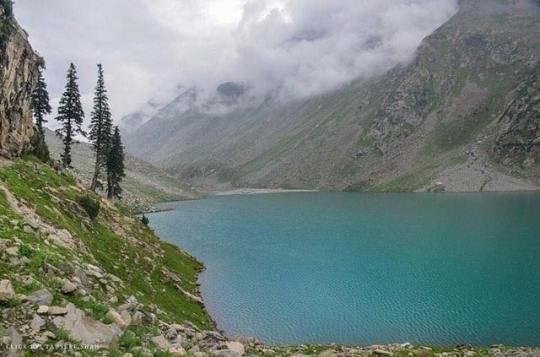
Kandol lake swat #Pakistan 😍😍 #beauty #travelgoals #travelling #travelpakistsn #northernpakistan #lush #Traveller #travelogue #traveldiaries #tayyabazworld
#travelogue#traveldiaries#travelgoals#pakistan#tayyabazworld#traveller#travelpakistsn#northernpakistan#beauty#travelling#lush
2 notes
·
View notes